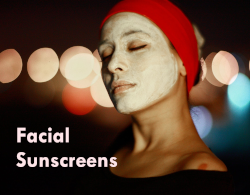Hello and welcome to the Beauty Brains, a show where real scientists answer your beauty questions and give you an insider’s look at the beauty product industry.
Beauty questions answered on this show
- Do silicones dry out your skin?
- Why do white hairs on my head turn reddish at the ends?
- What ingredients should look for in sunscreen while exercising?
Beauty Science News
Royal Society of Chemistry has a challenge for you!
Here’s how you can win £1million! The Royal Society of Chemistry has an ongoing program where they will award £1million to the first company that can produce a chemical free product. They started the program back in 2010 but unsurprisingly, no company has won the award thus far.
3D facemasks are introduced by Neutrogena
Well, it looks like Neutrogena is trying to cash in on both by launching a customized 3D facial mask that fits perfectly on your face.
Do women spend $15,000 on beauty products in a lifetime?
Doing a little math and if you spend $50 a month on beauty products, that’s $600 a year which over 40 years is $24,000. So, $15,000…I don’t know that doesn’t seem too outrageous. It actually seems a bit low to me. And if you compare it to other things we spend our money on (cab rides for instance) it seems like a pretty good deal to me.
Donna wants to know why her white hair, only in the front, is turning reddish on the ends, and is there anything besides a chelating shampoo the Brains can recommend?
Gray hair appears gray because it lacks the pigment used to naturally color hair, melanin. Melanin is produced deep in the hair follicle by melanocytes. As we age, for various mechanisms, the melanocytes stop producing melanin, so the hair becomes gray, or white. For some people, it’s not uncommon for their gray hair to continue to shift color.
In order to combat metal buildup in the hair, one can use a chelating shampoo that is specifically designed to sequester metal ions in the hair fiber and remove them. Most shampoos contain chelating agents, but not for metal removal from hair. That’s to sequester metals in the actual formulation. You’ll need to specifically look for one for metal removal.
Silicone in cosmetics
Thaïs asks, do silicones in cosmetics dry your skin? And also, please explain the difference between silica and silicones. Thanks!
Thanks for the question Thai. Let’s start with the second part first. What is the difference between silica and silicones. Silicones are compounds derived from the element Silicon which is the 14th on the periodic table of elements.
Instead most of the silicones you find in cosmetics are based on silicon-oxygen-silicon- (-Si-O-Si-) bonds. In nature, silicon exists in a mineral called quartz. In fact, quartz and silica are the same thing. Just Silcon bonded to Oxygen. Silica is the major component of sand. It’s a solid used for it’s abrasiveness (so for exfoliating), for its light-diffusing properties and for its ability to absorb oil.
Silicones are made from silica and can take on many forms from solid to liquid to gas. Through a variety of chemical reactions we can make things like Dimethicone, Cyclomethicone and all the other silicones use in cosmetics.
Silicones are used for a variety of reasons including
- Spreadability
- Feel
- Shine
- Occlusion
- Slip
Ok, so that’s why they are used. But do they dry the skin? No, there is no evidence that they are drying. In fact, I looked through the research report done in the CIR and there was no significant report of a topical silicone from a cosmetic causing dermal irritation or dryness. In fact, silicones like Dimethicone are occlusive agents which would be expected to increase moisturization.
Sunscreen on your face tips
Juels asks – What ingredients should look for in sunscreen while exercising?
Stick to the Zinc Oxide / Titanium Dioxide sunscreens. The ones with the hydrocarbon sunscreens like avobenzone or oxybenzone can cause stinging if they get in the eyes or even irritate sensitive skin.
One problem with these mineral sunscreen actives is that they can be visible. It’s not like you’ll look like a mime when using them but it can give a slight ghostly hue. There are nanoparticle sized zinc products that are invisible and these are perfectly fine to use if you want to avoid the ghostly look.
I’d stay away from something that has a lot of herbal extracts and things in it. Although these ingredients are supposed to be natural, they are packed with dozens of naturally occurring chemicals any one of which can cause skin irritation and reactions. Go for a minimalist strategy here and look for products with fewer ingredients.
Look for something that is fragrance free. Fragrance ingredients can cause skin irritation and stinging.
I also like sunscreens that have a film forming polymer in there that helps hold the product in place. Look for something with the word Crosspolymer or copolymer in there such as an ingredient like Dimethicone/Vinyl Dimethicone Crosspolymer.
Of course I also recommend wearing a visor and sunglasses if you are going to run outside in the sun.
Thanks for listening. Hey if you get a chance can you go over to iTunes and leave us a review. That will help other people find the show and ensure we have a full docket of beauty questions to answer.
Speaking of beauty questions, if you want to ask a question click this link
or record one on your phone and send it to thebeautybrains@gmail.com
Social media accounts
on Instagram we’re at thebeautybrains2018
on Twitter, we’re thebeautybrains
And we have a Facebook page.
Support the Beauty Brains!
The Beauty Brains are now on Patreon! Help support us to continue to make episodes.
Thanks again for listening and remember Be Brainy about your Beauty

